Preserving the spirit of the profession, elevating the product
The craft of making figurines of rice flour in Phuong Duc commune ( Hanoi ) has a history of more than three centuries. The craft originated from generations of artisans creating bird and stork shapes from sticky rice flour, carrying them to the market to sell. Over time, the craft has gradually modernized, figurines are made from sticks for children to play with, colors use safe food additives, the raw material is still sticky rice flour, but the products are more durable and can be displayed for longer.
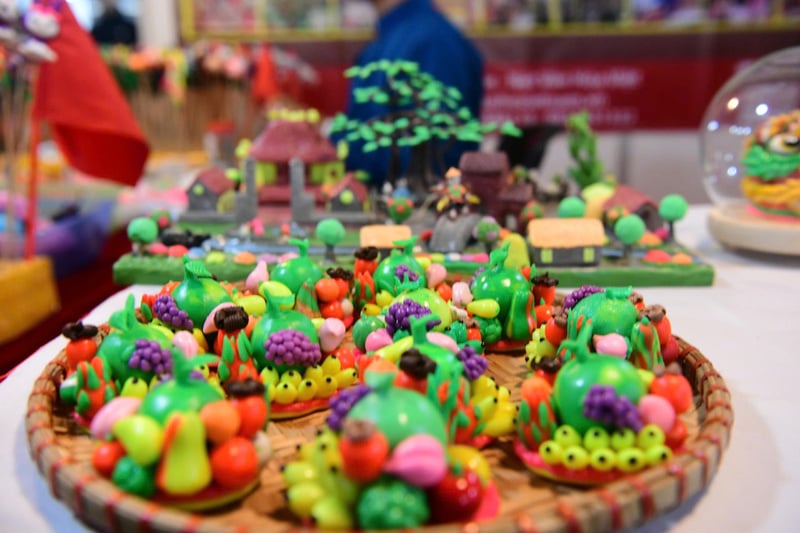
With skillful and dedicated hands, the people who make clay figurines “transform” the inanimate dough into creative and colorful works of art. Photo: NH
Each small figurine is not only a simple toy but also contains the memories of many generations, a bridge between the past and the present. Talking to a reporter from the Industry and Trade Newspaper, artisan Dang Van Dien, who has been involved in the profession since his childhood, shared: "In the past, figurines were both playable and edible, but now they are just for play and display, but they are much more durable and beautiful."
Regularly participating in fairs, festivals and events promoting craft villages such as the A80 Exhibition or the first Autumn Fair - 2025, every time he performs, especially in front of children, Mr. Dien realizes the special attraction of to he: " Children love cartoon characters like Tung Tung Tung Sahur or Princess Elsa. As for adults, to he evokes a part of their distant childhood memories."
However, besides the pride, the toy making profession is also facing many challenges. The modern toy market is increasingly rich, attracting more young people. Many people know the profession but few stick with it for long. According to artisan Dang Van Dien, the toy making profession is only enough to feed his passion, but not enough to support his family. On normal days, retail sales are not enough to cover expenses, only during festival or fair seasons can he have a better income.
Transforming through e-commerce and export promotion
After 2008, when Hanoi banned street vendors, many artisans had to find a new direction. Artisan Dang Van Tien, who has been involved in the profession for nearly 30 years, and a number of artisans from craft villages have boldly changed their business methods. “We put to he on e-commerce platforms, cooperating with shopping malls to display and sell products. Thanks to that, to he is no longer limited to the countryside but has reached customers nationwide, even abroad . ”
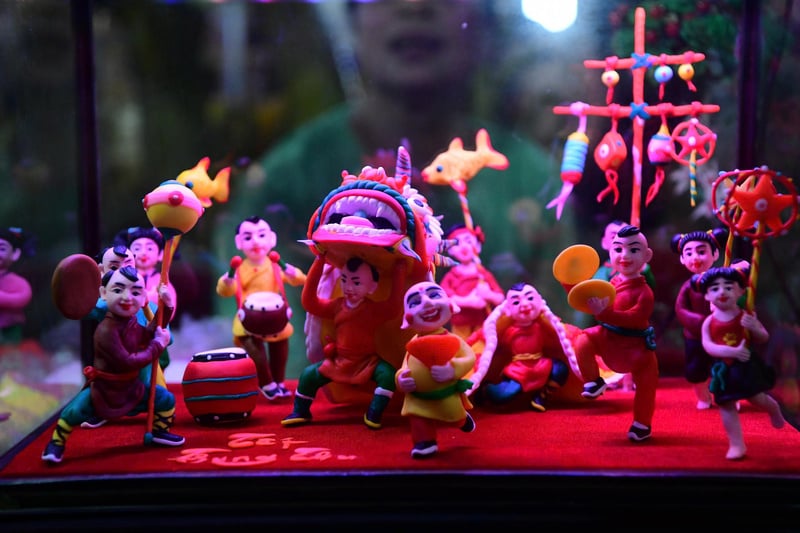
The beauty of folk culture through 'to he' figurines. Photo: NH
By leveraging social media, livestreams of making figurines on TikTok and Facebook have attracted hundreds of thousands of views. Many overseas Vietnamese and international customers have expressed their excitement at witnessing the process of making figurines, considering it a unique cultural experience of Vietnam.
Not stopping there, artisans also research to improve raw materials. Glutinous rice flour is mixed with natural additives to make the product more sturdy, able to be transported long distances without breaking. This opens up export opportunities to markets such as China, Korea and many other countries, where there is a great demand for culturally valuable handicrafts.
According to artisans, if further support is given in packaging design, trademark registration and quality certification, to he can completely become a typical cultural export product of Vietnam, similar to Russian Matryoshka dolls or Japanese paper fans.
Cultural pride and economic potential
One of the biggest challenges today is how to keep the young generation engaged in the profession. In Phuong Duc, the number of people making to he regularly is only about 10, the remaining 40 people only work seasonally during festivals.
To maintain the profession, artisans have proactively linked up with schools, especially kindergartens and primary schools, to organize experiential classes. Children can directly mold clay figurines and learn about folk culture and the history of the craft village. However, these classes are still short-term, usually only taking place during Tet or Spring fairs.
Artisan Dang Van Tien suggested: “The city should have a permanent exhibition and performance location in parks, shopping malls or tourist areas. There, artisans can perform, sell products and teach the profession to the younger generation. At the same time, schools should include the activity of making to he into extracurricular programs so that students can better understand traditional culture .” According to Mr. Tien, if given proper attention, the to he craft will not only be preserved but can also develop into a creative economic sector, linked to tourism and the export of cultural products.
Currently, Hanoi has more than 1,350 craft villages, of which more than 330 are recognized traditional craft villages. Each handicraft product carries within it the cultural identity and the talented hands of the craftsmen. Among them, Phuong Duc clay figurine craft village is a special symbol, both rustic and sophisticated, evoking childhood memories and opening up new economic potential.
The village’s to he products have now met the 4-star OCOP standard and are displayed at many fairs and exhibitions. Although there are only a few dozen people left in the profession, artisans like Mr. Dang Van Dien and Dang Van Tien are contributing to breathing new life into the profession, bringing products from the communal house yard to e-commerce platforms, from the countryside to the world. The artisans believe that, with the support of the government, scientists and the community, the to he craft will not only exist as a childhood memory, but will continue to develop, bringing the Vietnamese spirit to international friends.
“The craft of making to he figurines can only survive thanks to the love for the craft and the attention of society. We hope that one day soon, the to he figurines will be displayed in museums, souvenir shops and even abroad as a symbol of Vietnamese culture ,” said artisan Dang Van Tien.
From the rice flour birds and storks associated with the memories of the rural market more than 300 years ago, the craft of making to he figurines in Phuong Duc commune (Hanoi) is being renewed by artisans by combining tradition with modern technology. Not only stopping at being a folk toy, today's to he figurines also carry the aspiration to become a "cultural bridge" of Vietnam in the international market.
Source: https://congthuong.vn/to-he-tu-mon-do-choi-dan-gian-huong-den-san-pham-van-hoa-xuat-khau-429551.html






![[Photo] Cutting hills to make way for people to travel on route 14E that suffered landslides](https://vphoto.vietnam.vn/thumb/1200x675/vietnam/resource/IMAGE/2025/11/08/1762599969318_ndo_br_thiet-ke-chua-co-ten-2025-11-08t154639923-png.webp)



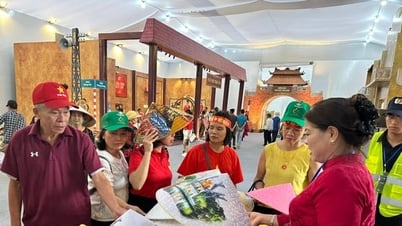
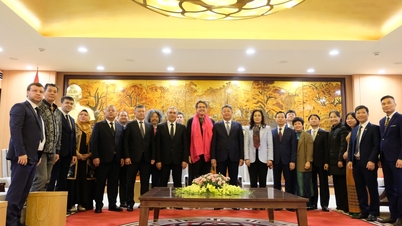

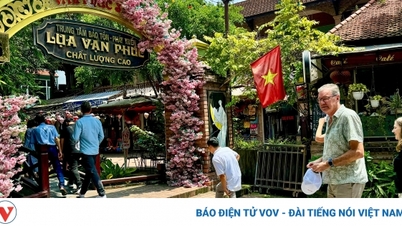


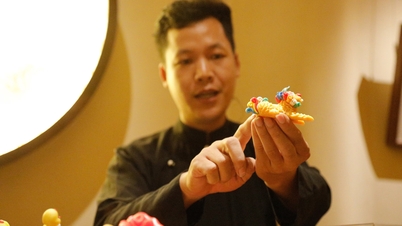




























![[Video] Hue Monuments reopen to welcome visitors](https://vphoto.vietnam.vn/thumb/402x226/vietnam/resource/IMAGE/2025/11/05/1762301089171_dung01-05-43-09still013-jpg.webp)



















































![Dong Nai OCOP transition: [Part 2] Opening new distribution channel](https://vphoto.vietnam.vn/thumb/402x226/vietnam/resource/IMAGE/2025/11/09/1762655780766_4613-anh-1_20240803100041-nongnghiep-154608.jpeg)













Comment (0)